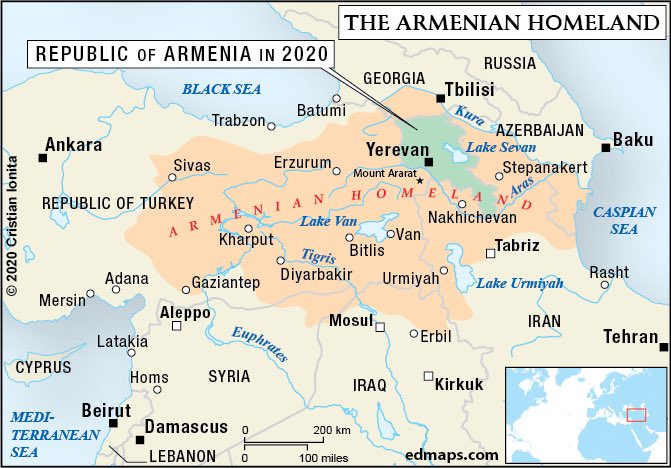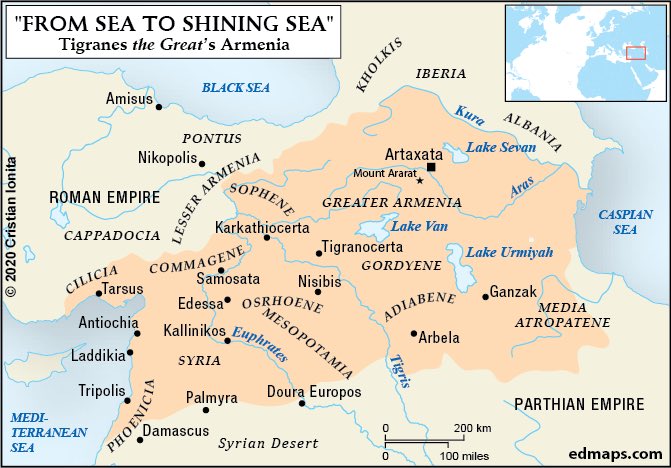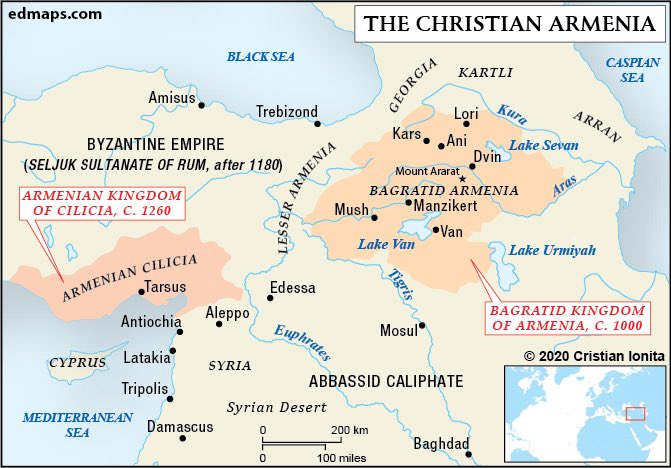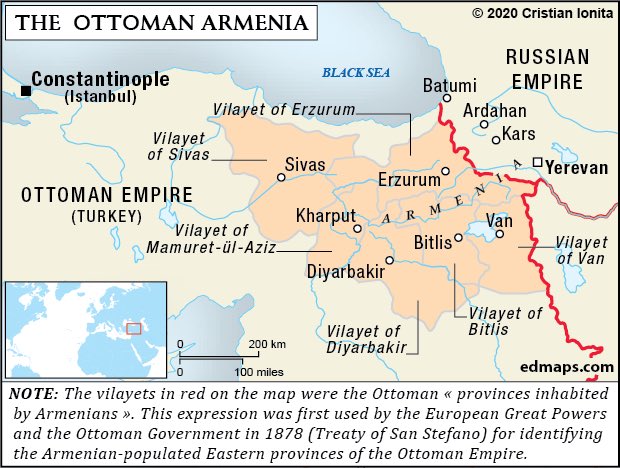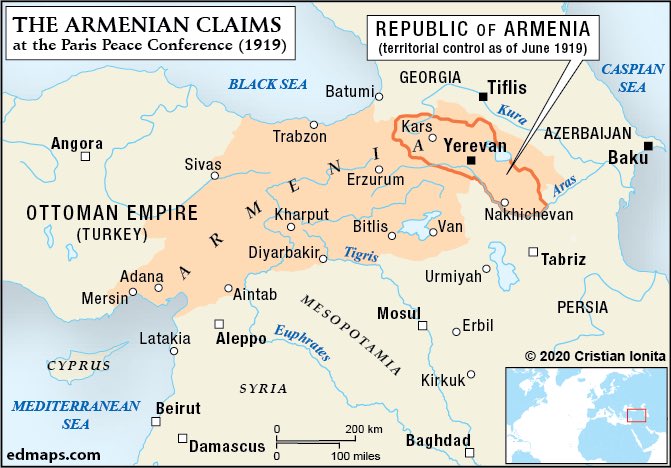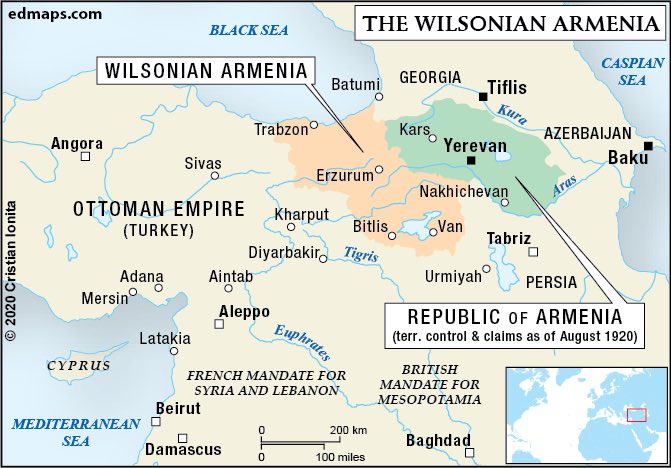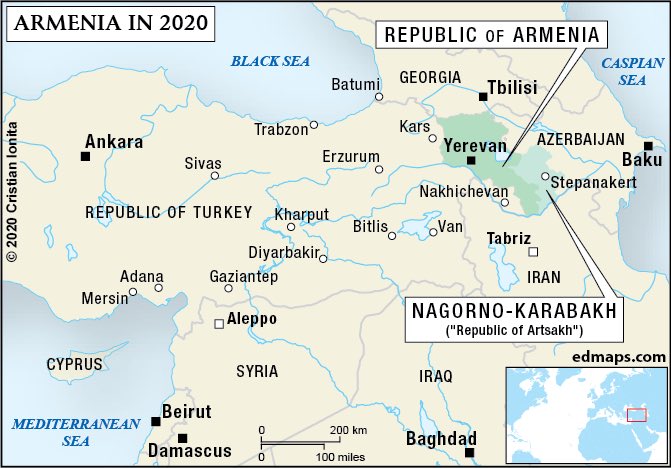1/7) The Armenian Highlands, gave birth to early states such as the Hayasa-Azzi (1500-1200), the Hurrians of Mitanni (1500-1200 BC), the Nairi Confederation (1200-900), and eventually Urartu or Ararat (860-585 BC). These laid the foundation for the Kingdom of Armenia.
2/7) The Yervanduni Dynasty ruled as Satraps for Achaemenid Persia (570-331 BC) before becoming Kings of Armenia (321-200 BC). They were followed by the Artashesian Dynasty (190 BC-12 CE) and later the Arshakuni Dynasty (53-428 CE). Transitions weren’t smooth as you can imagine.
3/7) Armenia became a Province of Sassanian Persia and was ruled by a Marzban (428-645) until it became an Emirate of the Caliphate (645-885). The Bagratuni Dynasty restored the Kingdom (885-1065), following the Turkic invasions the Cilician Kingdom was established (1080-1375).
4/7) Western Armenia came under a Turkish rule (1551) and Eastern Armenia came under Iranian rule (1501-1828). Much of Iranian Armenia came under Russian rule after (1828). Most Armenians, 2/3, lived in the western areas known as the “Six Vilayets” of the Ottoman Empire.
5/7) At the Paris Peace Conference Armenia (1919), Armenia laid claims to parts of Russia’s Kars Oblast, Yerevan, Elisabethpol (Ganja/Gandzak), and Tiflis (Tbilisi) Governorates and parts of Turkey’s Trabzon, Erzurum, Van, Bitlis, Diyarbekir, Harput, Sivas, and Adana Vilayets.
6/7) At the Treaty of Sevres (1920), the US proposed a new Armenia-Turkey border drawn by President Woodrow Wilson. The Treaty was never enforced, and Armenia did not exercise control of the territories it claimed in Turkey which were emptied of Armenians following the genocide.
7/7) The Republics of Armenia and Artsakh today comprise less than 10% of Historic Armenia’s territory.
Source of maps: https://www.edmaps.com/html/armenia_in_seven_maps.html

 Read on Twitter
Read on Twitter